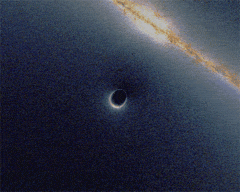Gravitational lensing occurs in numerous astronomical situations. Compile a catalog of examples from the web with photos of lensed stars, quasars, and galaxies. Give a one-paragraph explanation of what is shown in each photograph.
Einstein's Cross:

Einstien's Cross is a bright quasar 8 billion light years away, directly behind a much closer galaxy. It's named for Einstein due to it providing visual confirmation of his General Theory of Relativity. Einstein showed that gravity could curve space - including the light that travels through it. What we see is the light from the distant quasar curving around the gravitational well of a galaxy that lies between it and us. The four lobes are four paths that the light from the quasar trails to reach our eyes.
Einstein Rings:

Some more simple examples of gravitational lensing around a massive galaxy. These were discovered by the Hubble Space Telescope. They are full circles, but none are perfectly symmetrical - a truly perfect full circle has yet to be found.
Galaxy Cluster Abell 1689:

In addition to single galaxies, massive galaxy clusters can act as gravitational lenses. Abell 1689 is the most massive cluster known, and it's gravity works to lens several distant galaxies. It lies 2.2 billion light years away. Like many lensing galaxy clusters, it was imaged with the Hubble Space Telescope.
Galaxy Cluster MACS 1206:

Discovered as part of the CLASH survey - Cluster Lensing And Supernova survey with Hubble. MACS 1206 is another lensing galaxy cluster with some interesting views - like the dragon-shaped view of a galaxy on the left. Studying galaxy clusters like MACS 1206 is also useful in learning about the effects of dark matter.
Lensing Simulation of a Black Hole:

This is a simulation of how a passing black hole would lens the light from a distant galaxy. You can see the properties of the lensing clusters and Einstein Rings as it passes. Pretty cool.
Bonus Picture:

Another simulation - the USS Enterprise on the far side of a black hole. :)

Fascinating!
ReplyDelete